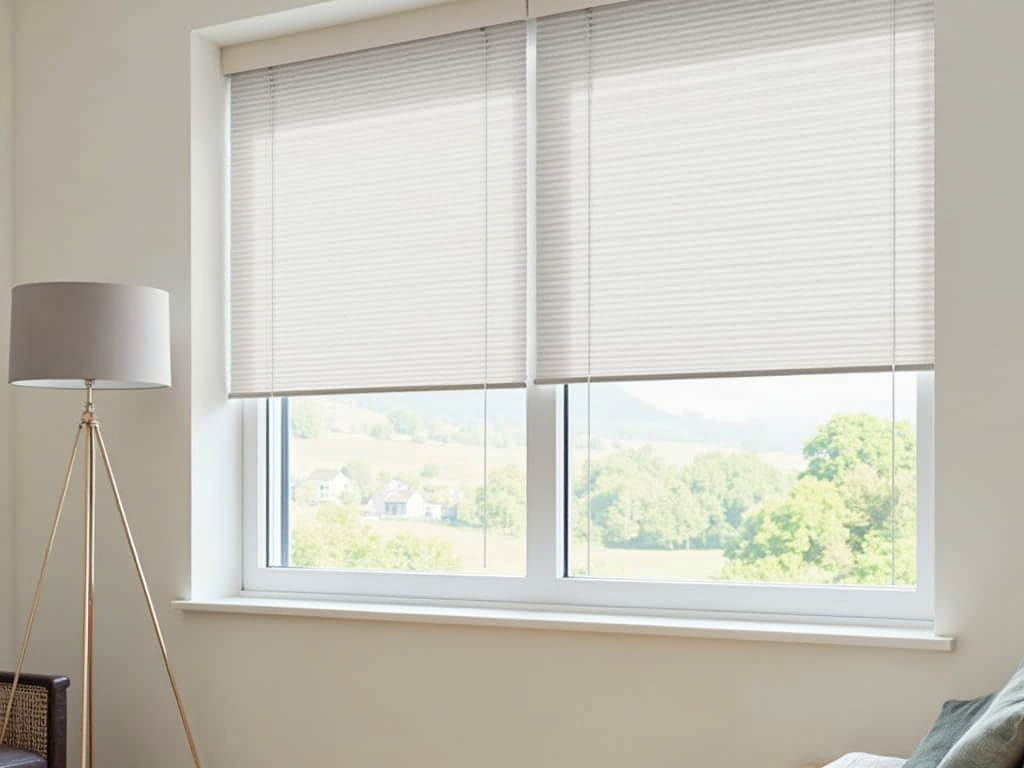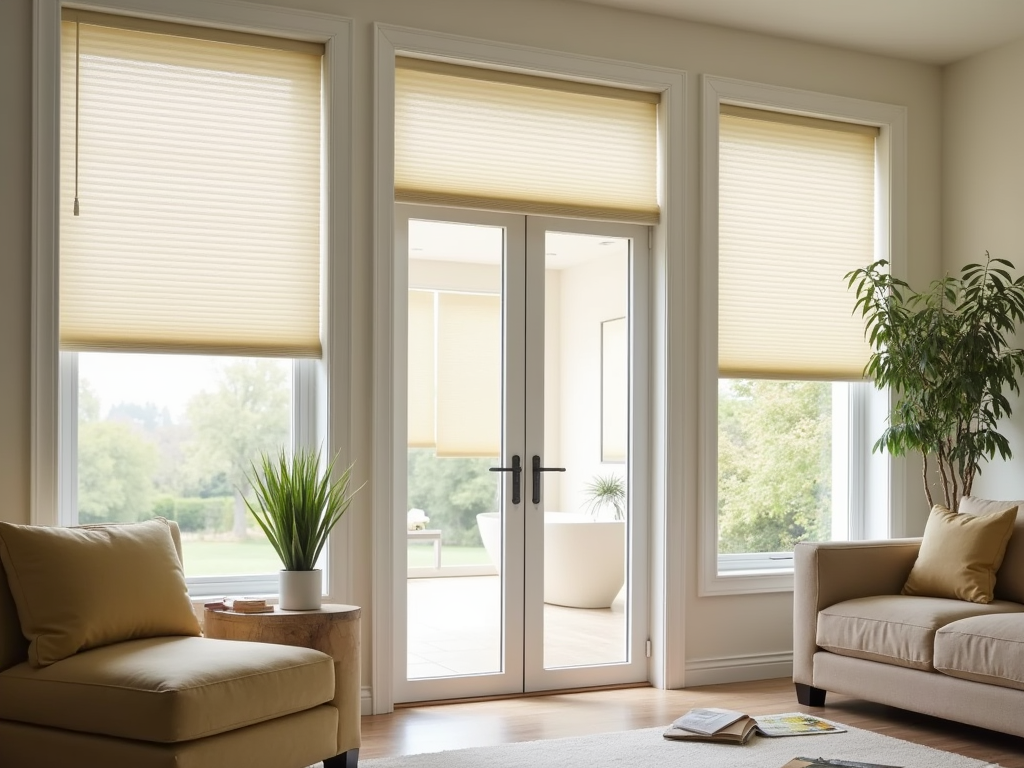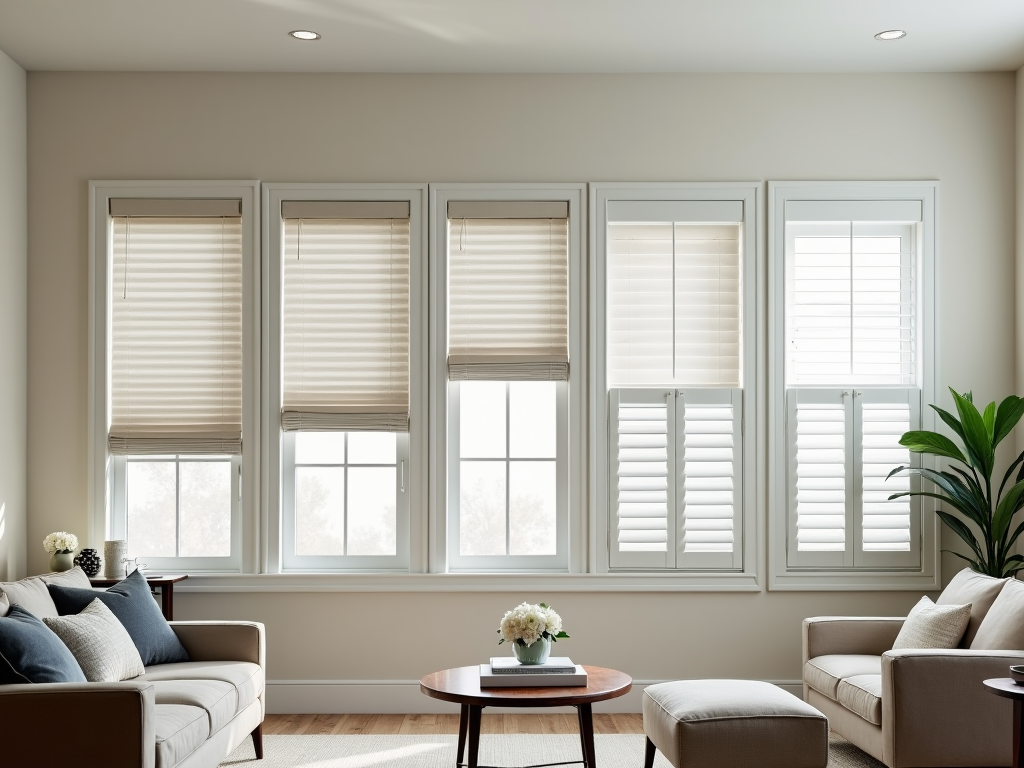
Key Takeaways
- Polywood shutters excel in durability, lasting over three decades while withstanding moisture, fading, and cracking. They are dependable and require minimal upkeep over time.
- Faux wood blinds offer moisture resistance, making them perfect for damp areas such as bathrooms or kitchens. They bring a combination of style and durability without the risk of bending or warping.
- Aluminum blinds are a sturdy choice, offering resistance to bending and proving ideal for spaces subject to heavy use or frequent handling.
- Cellular shades and roller blinds deliver a mix of energy efficiency, insulation, and strength. Their structure ensures they maintain both functionality and aesthetic appeal for years.
- High-quality materials, coupled with consistent care and maintenance, play an essential role in increasing the lifespan and reliability of blinds.
Understand your environment before committing to any option. For humid areas, aim for moisture-resistant materials like faux wood. For high-traffic zones, opt for aluminum blinds that won’t easily dent or bend. Each material has its strengths; match features with your home’s specific needs to ensure a long-lasting investment.
The Most Durable Window Blinds: What You Need to Know
Durability plays a big role in choosing window blinds, especially if you’re covering windows in high-traffic areas or rooms that deal with humidity, like kitchens and bathrooms. Sturdy blinds last longer, resist wear and save you from frequent replacements or repairs. Investing in quality now can mean less money spent later.
Material: The Foundation of Strength
The material of the blinds directly affects their strength:
- Aluminum blinds: These are long-lasting and handle daily use without bending easily.
- Wood blinds: Naturally durable but need proper sealing in moisture-heavy spaces to prevent warping.
- Faux wood blinds: Offer the appearance of real wood with enhanced resilience against damp conditions.
- Vinyl and PVC blinds: Excellent for standing up to humidity and resistant to cracking or fading, making them ideal for bathrooms.
Style and Usage Considerations
The style of the blinds matters too. Here are a few practical options:
- Vertical blinds: Smart for patio doors or large windows since they’re less likely to tangle or break under constant use.
- Cellular shades: Known for their insulating abilities, they hold up well in areas with significant temperature shifts.
Maximizing Long-Term Savings
Consider the long-term savings. Durable blinds not only outlast cheaper options but also maintain their appearance, reducing the need for frequent replacements. For homes with kids or pets, opting for blinds that can handle a bit of chaos—like cordless or motorized options—adds an extra layer of practicality. Strong materials and smart designs keep your spaces looking polished, year after year.

The Toughest Materials for Long-Lasting Blinds
Faux Wood Blinds
Faux wood blinds offer an excellent balance of durability and style. They’re crafted from high-quality synthetic materials that mimic the appearance of real wood without the drawbacks. These blinds resist moisture and temperature changes, making them perfect for humid spaces like bathrooms and basements. While their average lifespan is 3-5 years, proper care—like gently cleaning with a damp cloth—can significantly extend their use.
Real Wood Blinds
Real wood blinds bring a natural charm and durability to your windows. Basswood, often used in these, resists warping and fading better than other woods, maintaining its original beauty over time. Though no exact lifespan is guaranteed, well-maintained wood blinds can be a long-term option for those who want style and sturdiness. A light dusting with a microfiber cloth helps keep them in top shape.
Polywood Shutters
Polywood shutters stand out as the most durable option on the market. They can last over 30 years, making them a one-time investment for many homeowners. These shutters are engineered to resist moisture, fading, and cracking, which means they’ll maintain their appearance and functionality in just about any setting. They’re particularly well-suited for sunny or humid areas, such as kitchens or sunrooms.

Which Window Blind Styles Offer the Best Longevity?
Cellular shades, often called honeycomb shades, excel in durability while helping with insulation. Their unique structure regulates temperature effectively, making them energy-efficient. On average, they last around 5-7 years, especially when properly maintained and away from harsh sunlight.
Roller blinds are a practical and durable option. Available in materials like vinyl, they resist damage and are simple to clean. These blinds are compact and easy to install, making them a long-lasting choice for various spaces with minimal upkeep required.
Vertical blinds stand out for large windows or patio doors. Their materials resist both moisture and UV fading, making them a smart pick for areas exposed to sunlight or humidity. They maintain their functionality and appearance longer than many other styles, provided the slats are gently cleaned and mechanisms lubricated.

The lifespan of window blinds and coverings varies widely depending on materials and construction quality. Mini blinds, for instance, typically last 2-4 years. Their lightweight aluminum or vinyl construction makes them affordable and easy to install but prone to bending, discoloration, and breaking over time. They’re ideal for short-term use but are rarely seen as a long-term investment.
Roman shades and cellular shades hold up better, with an approximate lifespan of 5-7 years. These shades often use fabric or delicate materials that, while visually appealing, degrade faster under sunlight and with regular use. Maintenance and cleaning can help a bit but don’t expect them to match the longevity of sturdier options.
Wood shutters are much more durable, lasting 10-15 years with proper care. They carry natural strength from the solid materials, but issues like cracking or warping from humidity can occur without regular upkeep. For ultimate durability, however, Polywood shutters far surpass the rest with lifespans exceeding 30 years. Engineered from synthetic material, they resist moisture, cracking, and fading while offering reinforced strength. These shutters don’t just last longer; they also require less upkeep compared to natural wood.
Draperies fall somewhere in the middle with 8-12 years of useful life, mainly because they’re less exposed to wear and tear. Comparing the 2-4 year lifespan of mini blinds to the 30+ years of Polywood shutters highlights just how critical material quality is for durability. If longevity and resilience top your list, Polywood is the way to go.

Tips for Prolonging the Life of Your Window Blinds
Investing in high-quality materials is a game-changer. Blinds made from premium options, like aluminum or durable faux wood, endure harsh sun exposure, and frequent use much better than cheaper alternatives. These materials resist warping, cracking, and fading, ensuring they keep their look and function for longer.
Clean your blinds regularly. Faux wood and vertical blinds are among the easiest to maintain—just wipe them with a damp cloth or use a vacuum attachment. Avoid harsh cleaners, as they can strip finishes and weaken surfaces over time.
Check if your blinds come with a warranty. Many manufacturers provide guarantees against defects. Proper care—like cleaning and avoiding rough handling—helps maintain coverage under these warranties and prevents unnecessary wear. Combining quality materials with routine upkeep minimizes the need for replacement, saving time and effort.

Making the Right Choice for Your Space
Selecting the strongest window blinds depends on the room’s needs and how they’ll be used. For bathrooms or kitchens, moisture resistance is key. Faux wood blinds stand out here. They mimic the look of real wood but won’t warp or crack in damp conditions. For even higher durability, Polywood blinds—a synthetic material—are ideal, as they resist humidity while maintaining their strength over time.
If energy efficiency is a priority, consider blinds that offer insulation. Honeycomb (cellular) blinds trap air in their cells, helping to regulate indoor temperatures. These are great for rooms exposed to intense sunlight or those needing temperature control year-round. They’re both sturdy and functional, ensuring lasting comfort.
High-traffic spaces, like living rooms or family areas, call for blinds that can endure constant use. Blinds made with aluminum or reinforced vinyl can handle frequent adjustments without wearing out. They’re also simple to clean, a bonus for busy households.
Durability doesn’t mean sacrificing style. If your goal is to match the aesthetic of a particular room, focus on finish and tone. Faux wood blinds, for instance, can come in soft whites, rich browns, or elegant grays, blending seamlessly with most decor. For a modern edge, consider sleek aluminum blinds with a matte or metallic finish.

Sources:
Factory Direct Blinds – “12 Most Durable and Low-Maintenance Window Coverings of 2023”
Sunburst Shutters – “Life Cycle Comparison: Window Treatments”
Affordable Blinds – “Durable Low Maintenance Blinds Guide”
The Spruce – “Best Blinds and Shades for Windows”
